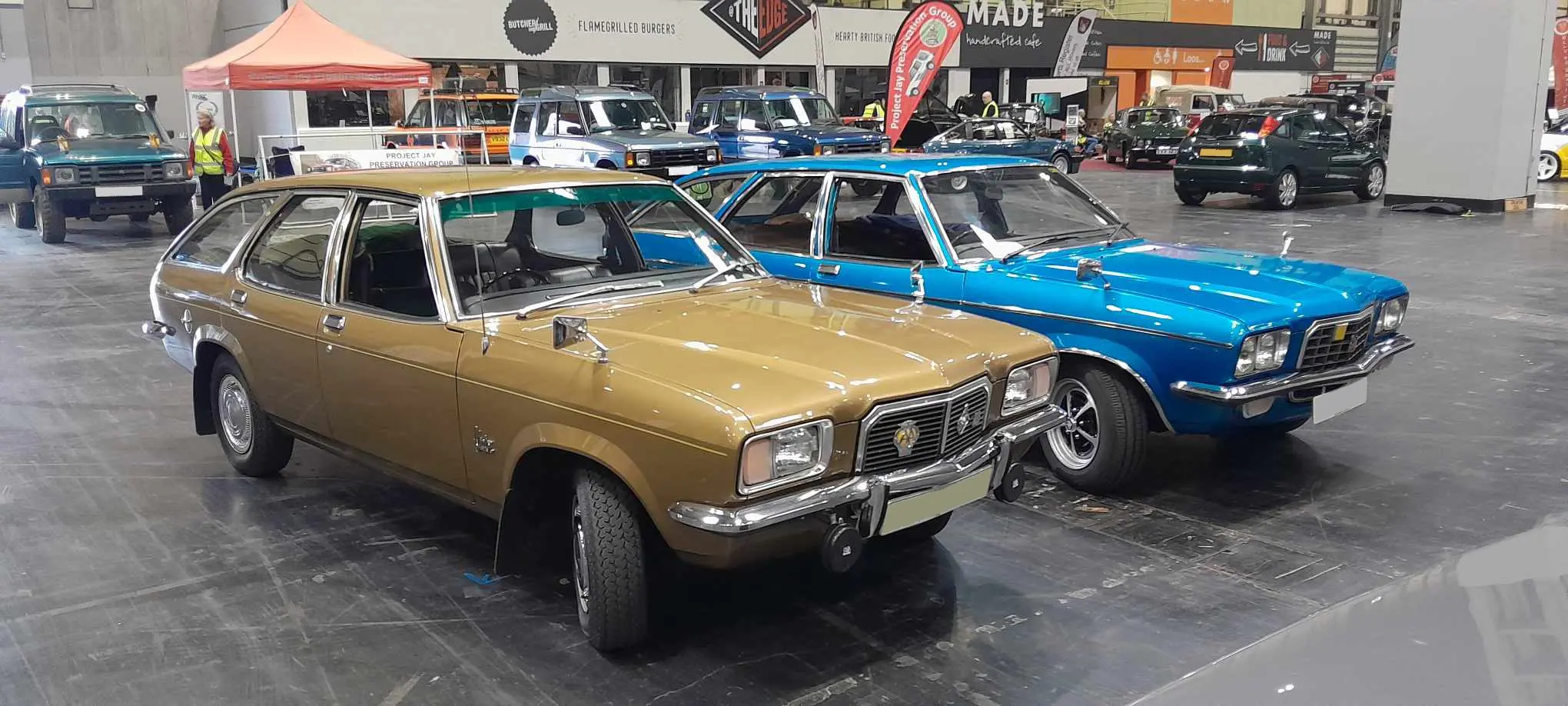MEET THE OWNER – KARL HOBBS AND HIS VAUXHALL VENTORA ESTATE
25 June 2024
I bought my Ventora five years ago after hearing about it from a friend in the Owners’ Club. It had been resprayed, but that was as far as the work went, so I basically acquired the shell and six boxes of spares. Also, most of the bits fitted to the car were wrong anyway!
We featured Graham Bull’s Victor 2300SL FE Estate a few weeks ago, which caused such a stir at the 2024 Practical Classics Classic Car and Restoration Show. Parked next to it was the flagship of the range – Karl’s Ventora Estate in all its blue metallic magnificence.

The FE replaced the FD in March 1972, and, as with its predecessor, the 3.3-litre ‘straight-six’ estate version was initially badged as the ‘Victor 3300SL’. However, by the end of 1973, Vauxhall promoted it to full Ventora status and promoted it as the car “For The Director Who Can’t Decide”. Not to mention that it could carry “a beautiful wife, four attractive children and a family’s worth of luggage.”
Leaving aside the appalling-even-for-the-1970s sales copy, the Ventora Estate was a very appealing car. £2,083 was a reasonable price for a 3.3-litre five-seater with power steering and a cabin trimmed in the finest nylon available to humanity. “Inside, you’ll think you are sitting in a beautifully-furnished Belgravia flat”, claimed the ever-modest Vauxhall. The message was clear - Ventora Estate was transport for motorists with a Peter Bowles moustache and a smooth line in patter at the annual sales convention.
Meanwhile, your friendly local Vauxhall dealer could point out the Ventora’s semi-fastback styling was far sleeker than the rival Ford Granada and Triumph 2.5 PI Mk.2 Estates. Nor was there a station wagon version of its (far more expensive) in-house competitor, the Opel Commodore B. The Observer found the Ventora Estate “quiet and graceful” - virtues that appealed to many owners.
Motor thought the new Ventora “remarkably refined, smooth and comfortable”. Car moaned about “the old nail of an engine” but did conclude: “The Vauxhall we rather liked for the fact it has a good shape and, more importantly, represents a considerable improvement over previous examples of the species”. In reality, the 3,293cc OHV unit was approaching the end of its life, while the 1973 OPEC Fuel Crisis inevitably had a negative impact on Ventora sales.
When production of the Ventora ceased in 1975, it marked the end of an era for Vauxhall, their last quasi-American large estate car. The 3.3-litre engine was not available on the facelifted VX of 1976, while future big Vauxhalls—the Carlton, Viceroy, Royale, and Senator—were modified Opels.
This is why the reaction to Karl’s Ventora Estate at the NEC was so gratifying, with its styling and sheer presence causing many an admiring glance. Karl sometimes finds people mistaking his car for a Ford Cortina, but he is justly proud of owning the Vauxhall that is able to carry “58 cubic feet of antiques and potted shrubs,” to quote one advertisement.
Not to mention being the custodian of a car that is “Luxurious to own. Satisfying to drive.”
With Thanks To: Karl Hobbs, Graham Bull and https://www.facebook.com/groups/330336020316798
